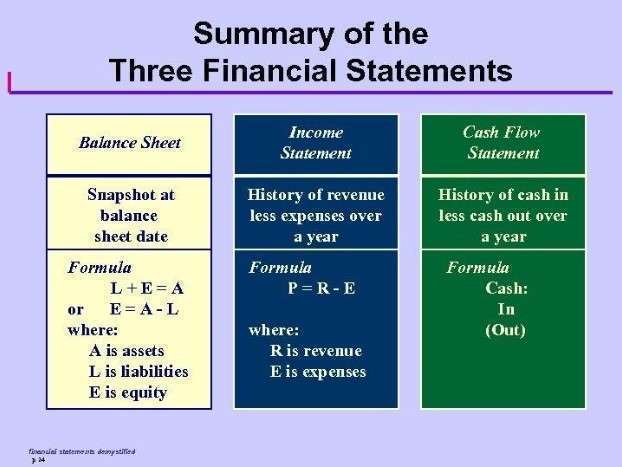
Accounting might not be the most exciting part of running a startup, but it is petty cash what keeps your business financially healthy. Following proven accounting advice for startups can help you stay on top of your finances without breaking a sweat. If you are unsure about deductions, keep a detailed record of all your expenses, as many business-related costs can be deducted from your taxable income. A Chart of Accounts (COA) is basically a list of all the accounts your business will use to track its financial transactions. This might sound intimidating, but it is just a way of organizing your business’s finances. Set aside time at the end of each month to go over your income and expenses.
- Implementing accounting principles such as generally accepted accounting principles (GAAP) ensures that startups adhere to standardized practices in financial reporting.
- We’ve served as beta testers and on customer advisory boards for the most significant AI tools for startups, which means we not only understand AI tools, we helped shape their development.
- These records include income, expenses, purchases, and other financial activities documented in financial journals or ledgers.
- Accounting for startups involves systematically recording, organizing, and understanding the financial data of the business.
- Investors fund startups because they believe that the financial obligations startups take on will be manageable when the startup reaches maturity.
Choose an accounting method
By tracking accounts receivable and payable, business owners can anticipate cash shortages, schedule payments, and avoid unnecessary borrowing. Proper cash flow management allows businesses to plan for future expenses, avoid overdrafts, and invest in growth opportunities. Bookkeeping provides a structured approach to tracking every dollar that enters and exits a business.
Free Tools
This will ensure that your finances are in order and help accountant for startups you avoid any issues down the road. This will help you stay organized and on top of your finances as your business grows. Otherwise, the business may damage its relationship with vendors and suppliers, which could jeopardize future orders. An effective inventory management system will help you stay on top of your stock levels and make sure that you always have the right amount of product on hand.
How MakeStickers started maximizing the value of its cash with Ramp

For example, if a new venture has a parachute rate of $50000 and has $ in the bank, its cash vulnerabilities are net ten months. This means that the business will close down within ten months due to depletion of cash if the burn rate is consistent at $50000 every month. Receipts play a fundamental role of documenting expenses in the course of business operation.
Compare your bank statements with your financial records regularly. This process, called reconciliation, helps you catch errors, identify fraudulent transactions, and maintain accurate records. Investors expect startups to have organized, transparent financial records. Good accounting practices can build trust, make it easier to raise capital and demonstrate that the business is on a solid footing. A startup accountant can help you organize these obligations, so you can better plan for future growth.
How do you select an accounting software?

In addition to being more efficient, automation minimizes the risk of error in managing financial elements. It aids in ensuring compliance, cash management, and helps the business to concentrate on what matters most. Refers to the record of outstanding balance states and money due from customers in turn. Efficient accounts payable and accounts receivable management strengthens cash flow and allows for proper vendor management and timely payments leading to efficiency in financial activities. Such records are both and useful on a day to day basis in financial activities and more importantly serve to create a groundwork for further growth as well as regulatory adherence in the future. A bank statement illustrates all the deals that have taken place around a specific bank account during a particular time frame, which is often a month.


Investors ask for numbers, not stories – they want clarity, and so should you. There are a few different options https://www.bookstime.com/articles/scalefactor available when it comes to accounting and bookkeeping. Using accounting software is somewhere in between doing everything yourself and outsourcing the work. They can choose to do everything themselves, outsource some or all of the work, or use accounting software. Finally, make sure to stay organized and keep on top of your accounting and bookkeeping regularly.

- CPAs are legally allowed to provide tax services above and beyond what other accounting professionals can do.
- By implementing effective cash accounting or accrual accounting methods, entrepreneurs can monitor incoming and outgoing funds and anticipate potential cash flow fluctuations.
- If you are taking money out of the business, treat it like a salary.
- A fundraising round, due diligence for an acquisition, or applying for a bank loan or line of credit could require a startup to undergo a financial audit.
- While they will not go out and secure the funds or represent you in the negotiation process, your accountant will be aware of what funders look for when making investments in startups.
- It is also a must when filing taxes, as the IRS expects all business transactions to be clearly documented.
- For small businesses, the significance of Bookkeeping is imminent.
A more comprehensive system where every transaction affects two or more accounts—one as a debit and one as a credit. This method ensures that the financial records are balanced and is widely used across industries with more complex financial needs. If there is no proper bookkeeper in your firm, it can get complex to properly have enough funds for functions like employee payments, vendor payments and assessing operational costs as well. Better cash flow management makes sure that you can easily manage financial priorities easily. Well, manual systems are an okay choice when doing accounting for a small businesses with few financial transactions taking place.




